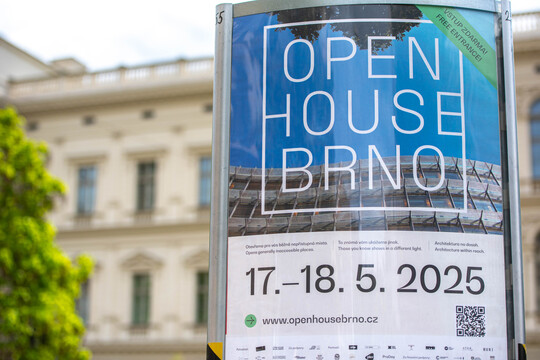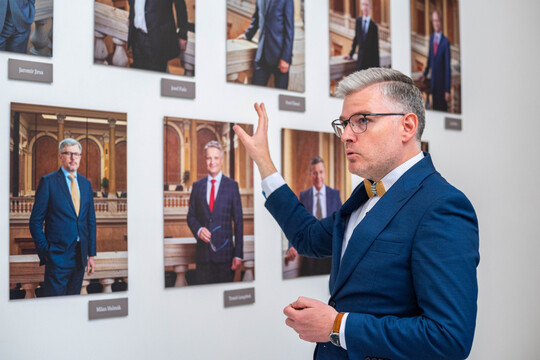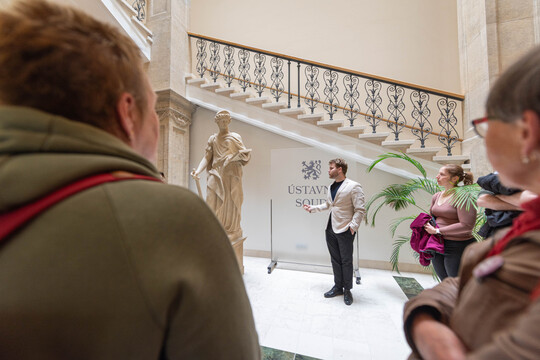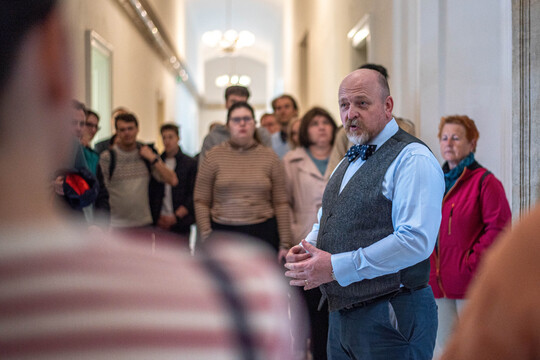The Constitutional Court regularly participates in the Open House Brno festival (https://openhousebrno.cz/). It does so with the aim of allowing those interested to see the interior of an extraordinary building and in an effort to provide the public with comprehensible information about its activities and its mission as a judicial body for the protection of constitutionality.
This year's festival took place on the weekend of 17 an 18 May. The program at the Constitutional Court included eight guided tours. Due to the great interest from the public, the capacity was increased again this year. Two hundred and forty people visited the premises of the Constitutional Court with commentary from its employees. Among other things, the tour guides took the visitors to the courtroom where judgments of the Constitutional Court panels are pronounced, to the carriage entrance through which Queen Elizabeth II entered the building in 1996, the newly renovated Grand Council Room, dominated by the Constitution of the Czech Republic itself, and the Assembly Hall, which today serves as the venue for public oral hearings of the Constitutional Court and the pronouncements of its plenary judgments.
The building, which has housed the Constitutional Court since its foundation in 1993, was built between 1875 and 1878 as the seat of the Moravian Diet (Zemský sněm/Landtag). It was designed in the historicist Neo-Renaissance style by the renowned Viennese architects Robert Raschka and Anton Hefft. J. Schönfeld, A. Loos Sr. and J. Tomola, the prominent artists of their time, decorated the facades and interiors. It is one of the most remarkable buildings not only in the city of Brno but also in Moravia in general. It is significant for its history, its architecture and the institution that has been seated here for over thirty years. The interconnectedness of city and place, art and knowledge, past and present is rarely as fascinating as in this house.
Pavel Dvořák
Head of External Relations and Protocol Department




Photo: Jiřina Rittichová